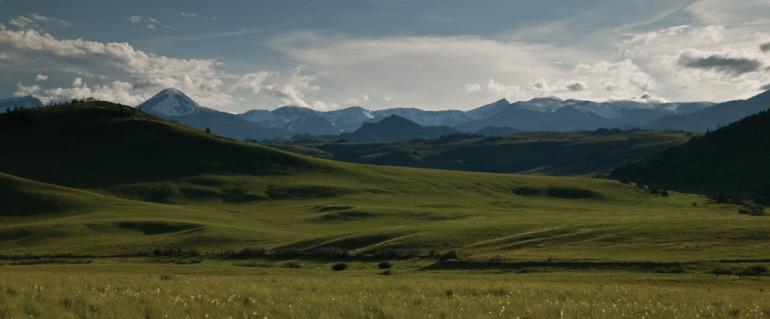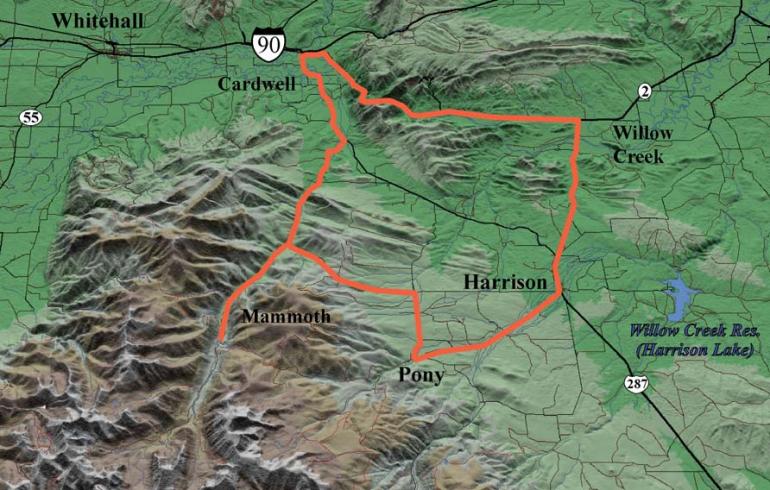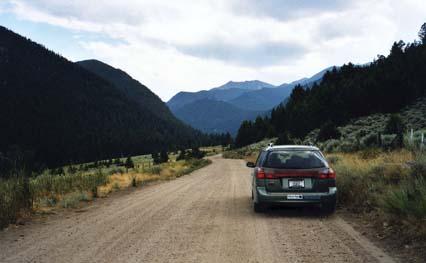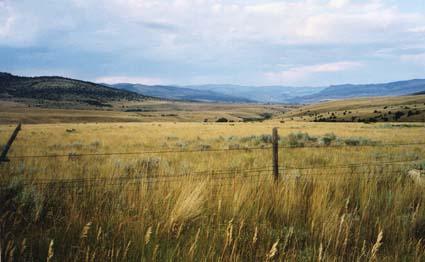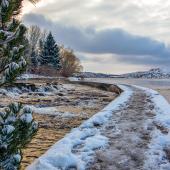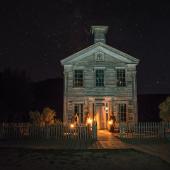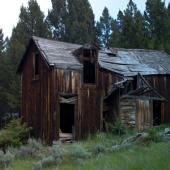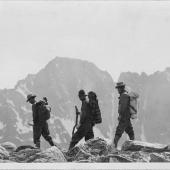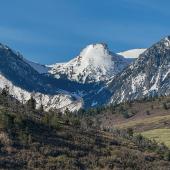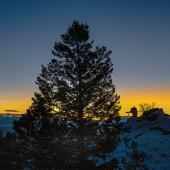Family Roots: Codger tour #5
For the past several years, my mother and I have been seeking out new places and spectacular Montana views that even an 89-year-old with limited mobility can enjoy, thanks to my trusty Subaru. Recently, our friend Chuck organized a “codger tour” for us to a corner of Madison County.
We began in Harrison, where Chuck bragged about the charms of his adopted hometown: the great meals at Café 287, the opportunity to tour the chocolate factory at Papa’s Candy, and a reminder that Harrison Lake (aka Willow Creek Reservoir) a few miles east of town still provides the fishing and lukewarm recreational water I remember from my youth.
From Harrison, we drove north on U.S. 287. Just before Willow Creek, we paused for a few moments at the Parker Homestead state monument to contemplate the courage and persistence of the generations who came to this country a century ago. Then, we headed west on Montana Route 2 along the Jefferson River, past the turnoff to Lewis and Clark Caverns, and past the old musical festival site at La Hood.
As the road approached the interstate, we turned left into Cardwell. Ever the local business booster, Chuck led us into the Calico in Clays shop. Three local clays—in shades of beige, reddish, and brown—meld in striking patterns in the pots and vessels. Chuck urged the clerk to tell us about her activities as the one-woman humane society for the region. “We’ve rescued everything up to a llama,” she confided.
In Cardwell, we found South Boulder Road, a paved thoroughfare through farm country, which downgraded to a road more typical of our codger tours—rough and rocky, but passable—as it began winding into the Tobacco Root Mountains beside a sparkling stream. Chuck pointed out the striking geology all around us: tilted, layered strata and scattered boulders bigger than SUVs.
The road took us right through the apparently mythical old-time mining town of Mammoth (its name doesn’t show up on my Montana Gazetteer). Yet according to one website, over $14,000,000 in gold and silver was removed from Mammoth at the turn of the last century. The rather ugly tailing pile at the downstream end of the town appeared to be as real as the lawn sprinklers running outside vacation homes scattered among old abandoned buildings.
We continued up the road, marveling at the alpine views. About six or seven miles beyond Mammoth, we came to a fork. We could have gone another three or four miles up either road to trailheads servicing alpine lakes (if we’d only gotten an earlier start!). People coming down in a much taller vehicle than mine promised the road was as good as what we’d already passed over, but we were running out of light.
We found the ultimate mountain amenity at this fork: a Forest Service restroom. As my mother took advantage of it, Chuck fell into conversation with some folks returning from farther up. “We’ve brought our friend Menga on what we call a codger tour,” he said.
“Menga?” the woman said. “Is she from Miles City by any chance?”
It turned out she was the daughter of a woman who had gone to a small country school outside Miles City with my mother 80 years ago, proving once again that Montana is really a small town spread over a vast region.
Reluctantly, we turned back down the canyon, eventually taking a right turn, clearly marked, toward Pony and Harrison. We drove through the Indiana University Geology Research Field Station (I’m betting they don’t have geology like the Tobacco Roots back home in Indiana!). The road here was soft dirt—not something I’d want to chance after a hard rainstorm. It turns into a wonderfully steep downhill road that provides dramatic, expansive views of nearby and distant mountain ranges.
We came into Pony from the north and paused to admire a unique mailbox on the left just before we reached the old Victorian buildings. If you’ve never been to Pony, turn right on the main street and drive up to see the remains of the old stamping mill. If your timing is right, you can have a meal or a beer at the Pony Bar. If this is the only trip you’ll ever make to the Tobacco Roots, take the right turn just below town and follow the signs to Potosi Campground, six or seven miles along another delightful, tumbling stream. But why not save that road—and the lakes that lie above the hot springs—for another codger tour? From Pony, the road leads straight across the fields to Harrison, completing a very satisfying circle.

